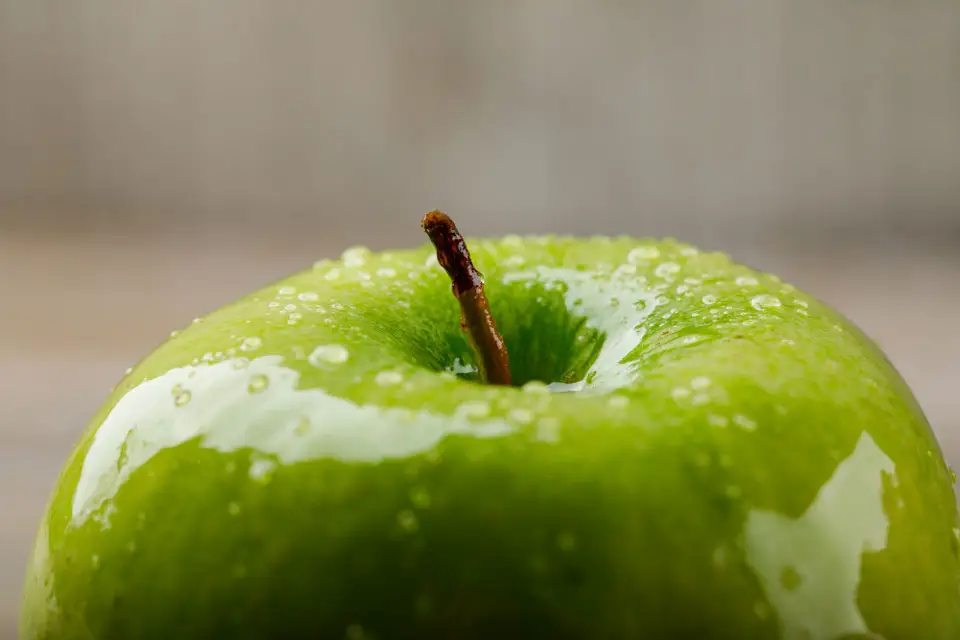I love having an apple as a snack every now and again and, as I’m sure you do too, I would occasionally give my dogs a small slice or two. However, I personally don’t like to eat the apple skin and I would just throw it away after peeling the apple.
But, this got me thinking. Can dogs eat apple skin, and if so, does it have any benefits?
Yes, dogs can safely eat apple skin from both green and red apples because it promotes bone and dental health, promotes a healthy digestive system, promotes a healthy weight, and it helps prevent chronic diseases such as cancer in dogs.
Ideally, you should cut the apple skin into small slices to prevent your dog from choking on it. Additionally, apple skin should be given as an occasional treat because it can cause digestive problems when consumed in large quantities.
Can Dogs Eat Apples?
Yes, dogs can eat apples because apples, just like apple skin. contain a lot of vitamin A and vitamin C, which promote bone and dental health, fiber which is great for your dog’s digestion, and they are also low in sugar which promotes a healthy weight – making them perfect for your furry friend.
The Benefits Of Feeding Apple Skin To Your Dog
I briefly mentioned the benefits of feeding apple skin to your furry friend. Let’s have a look at them in more detail.
Promotes Bone And Dental Health
Apple skin contains vitamin A and C, and this helps with many things such as keeping your dog’s bones and teeth healthy. It also helps to keep your dog’s eyes and vision in great condition.
Maintains A Healthy Weight
Ursolic acid is a compound found in apple skin, and this helps your furry friend keep a healthy weight, provided that you feed him apple skin in moderation.
Promotes A Healthy Digestive System
Apple skin is rich in fiber, and we all know the important role that fiber plays in keeping your furry friend’s digestive system healthy.
Helps To Fight Chronic Diseases
Not many people know this, but apple skin contains triterpenoids which is a special compound that plays a role in fighting chronic diseases such as cancer in dogs.
The Risks Of Feeding Apple Skin To Your Dog
There are, however, a few risks involved in feeding apple skin to your dog. Let’s have a look at them.
Choking Hazard
Apple skin should ideally be sliced into smaller pieces when fed to a smaller dog because it can be a choking hazard if eaten by a small dog.
Upset Stomach
If you feed your furry friend too much apple skin on a regular basis then it can cause him to suffer from an upset stomach due. Apple skin contains sugar and fiber, and this can cause digestive problems when not fed in moderation.
Weight Gain
Due to its sugar content, apple skin can cause your pup to gain unwanted weight if he eats large amounts of apple skin on a regular basis. It is therefore a good idea to give him this delicious treat occasionally.
Cyanide Poisoning
Apple seeds contain small amounts of cyanide, and if consumed in large amounts, it can make your furry friend very ill. Make sure that the apple skin is completely free of any apple seeds.
Conclusion
As you can see, dogs can safely eat apple skin because they have all the benefits normally associated with apples.
Apple skin promotes bone and dental health, promotes a healthy digestive system, helps to maintain a healthy weight, and it helps prevent chronic diseases such as cancer in dogs thanks to a special compound called triterpenoids.
Take care to slice the apple skin into smaller pieces to prevent your dog from choking on it, and take extra special care to keep the skin free from apple seeds. Apple seeds contain a small amount of cyanide which can make your pup very ill.
And finally, moderation is key when giving your dog this delicious treat, so it is best to feed it to him occasionally.


